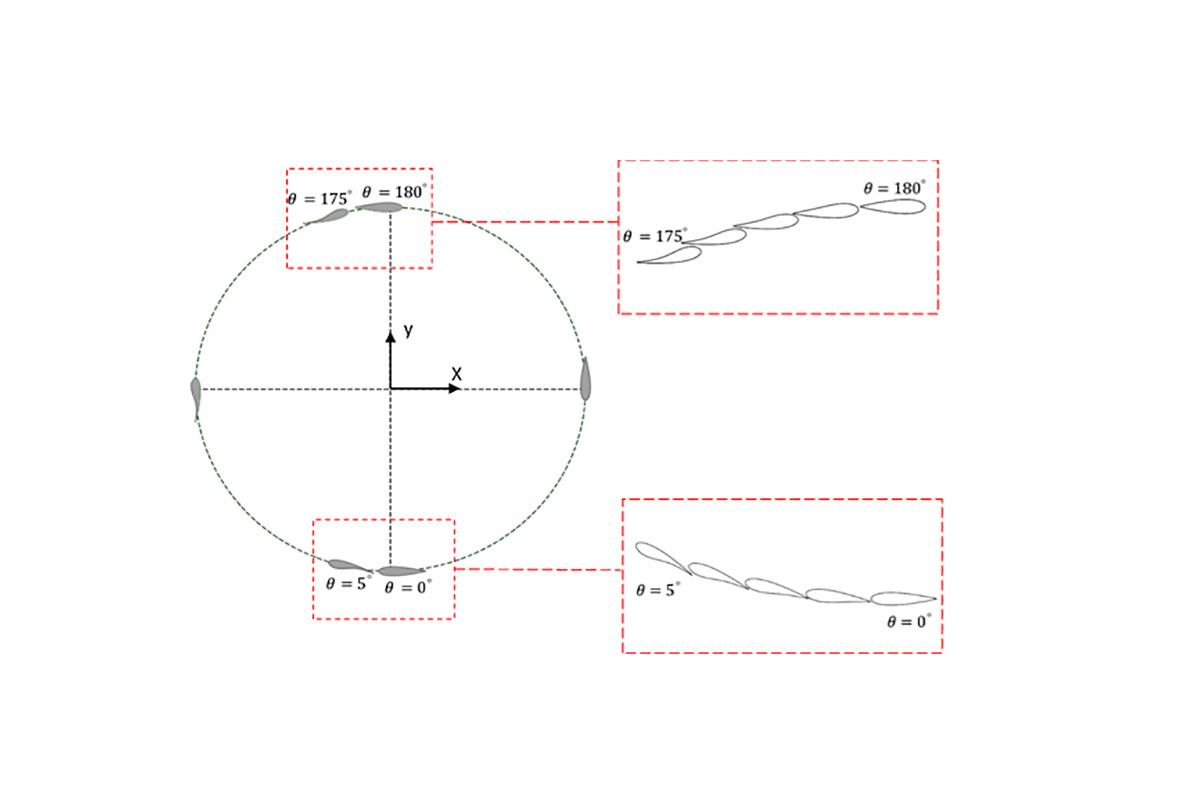Numerical Investigation of the use of Flexible Blades for Vertical Axis Wind Turbines
Project Details
- Student(s): Ahmad Hijazi
- Advisor(s): Dr. Michel El-Khoury and Dr. Amne El-Cheikh
- Department: Industrial & Mechanical
- Academic Year(s): 2022-2023
Abstract
Wind turbines are divided into two categories depending on the orientation of the rotating axis: Horizontal Axis Wind Turbines (HAWTs) whose axis is parallel to the direction of wind and Vertical Axis Wind Turbines (VAWTs) whose axis is perpendicular to the direction of wind. HAWTs are still the commercial option for large scale power production due to their higher efficiency. However, VAWTs are gaining a lot of interest in urban environment due to the low installation and manufacturing costs, low noise pollution, no yaw mechanism due to its omni-directional nature and its performance in turbulent conditions where wind flow is unsteady and unstable. This study proposes a novel vertical axis wind turbine (VAWT) design with flexible blades aiming to improve their energy extraction capability. An optimization study is carried out using computational Fluid Dynamics (CFD) simulations and Design of Experiments (DOE) to get the optimal design parameters of the flexible blade at different Tip Speed Ratios (TSRs). In addition, a comparison between the DOE results of both 2D and 3D CFD simulations is achieved to assess the use of 2D simulations for optimization purposes. Also, a detailed numerical study of the aerodynamic performance of the turbine based on this new design is done to compare the rigid and flexible blade models’ power coefficient and flow fields around the blades. Results of 2D and 3D CFD simulations show that the flexible blades are able to improve the power coefficient of the turbine by up to 66% and 32% respectively at low tip speed ratios diminishing gradually with increasing tip speed ratios. It is also noticeable that similar pattern in power coefficient results was obtained from the 2D and 3D simulations of both turbine models. This, in turn, demonstrates the efficacy of 2D simulations in accurately determining optimized design parameters while significantly reducing computational costs compared to 3D simulations.
Publications
- Hijazi A., El-Cheikh A., El-Khoury M. Numerical investigation of the use of flexible blades for vertical axis wind turbines, Energy Convers. Manag. 299:117867, 2024. doi:10.1016/j.enconman.2023.
